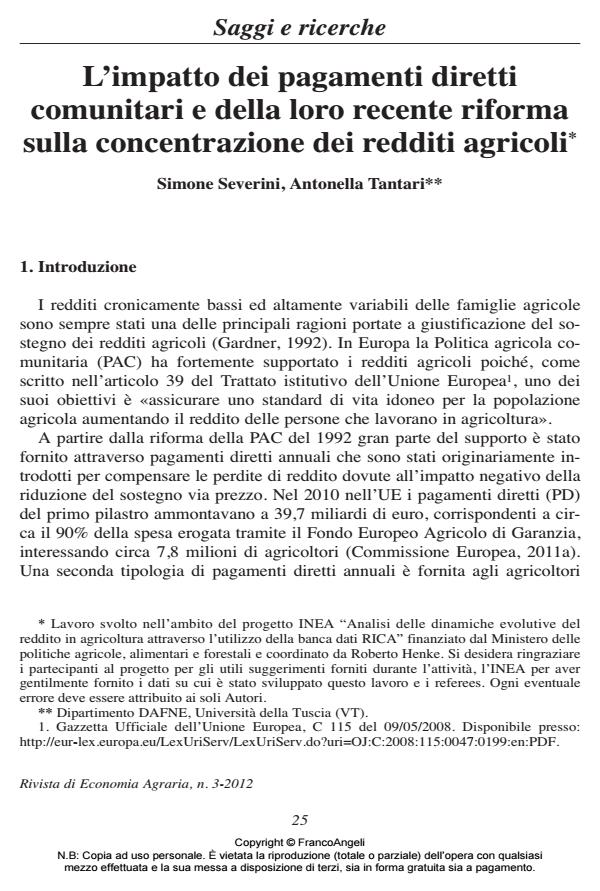The impact of EU direct payments and of their recent reform on the concentration of farm income
Journal title RIVISTA DI ECONOMIA AGRARIA
Author/s Simone Severini, Antonella Tantari
Publishing Year 2013 Issue 2012/3
Language Italian Pages 22 P. 25-46 File size 442 KB
DOI 10.3280/REA2012-003003
DOI is like a bar code for intellectual property: to have more infomation
click here
Below, you can see the article first page
If you want to buy this article in PDF format, you can do it, following the instructions to buy download credits

FrancoAngeli is member of Publishers International Linking Association, Inc (PILA), a not-for-profit association which run the CrossRef service enabling links to and from online scholarly content.
Direct payments are the main instrument of support to farm incomes in the European Union. After their decoupling from production, the redistributive goal has become a major political justification for maintaining this support tool. This paper analyzes the role of direct payments in the formation and concentration of farm incomes. The analysis takes into account the support provided through the annual payments from the first and second pillars of the CAP. The decomposition of the Gini coefficient is used to analyze the impact of both support tools on the concentration of farm income in Italy. The analysis is carried out on the entire sample of Italian FADN farms. These farms are also stratified by districts and by the types of farming where direct payments generate a large share of income. Research results indicate that direct payments are highly concentrated. Nevertheless, they reduce the concentration of total farm income. Thus, a reduction in their level could result in an increased concentration of income especially in some of the types of farming considered. Moreover, after the implementation of the Fischler reform, the role of direct payments in terms of reduction of the concentration of agricultural income has become less relevant than before. This is due not only to reduction of the relative importance of direct payments in the generation of income, but also to a change in their distribution across farms.
Keywords: Income inequality, Common Agricultural Policy, direct payments, the Gini coefficient
Jel codes: D31, Q18, Q12
Simone Severini, Antonella Tantari, L’impatto dei pagamenti diretti comunitari e della loro recente riforma sulla concentrazione dei redditi agricoli in "RIVISTA DI ECONOMIA AGRARIA" 3/2012, pp 25-46, DOI: 10.3280/REA2012-003003